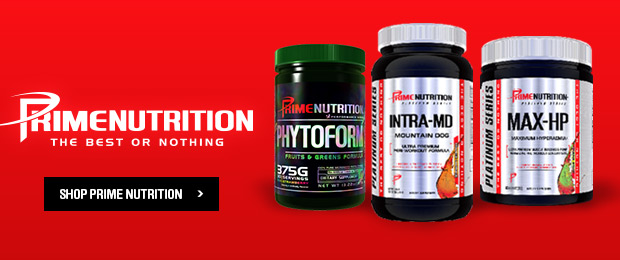
There are a lot of supplements in this industry. From meal replacement powders to preworkout stimulants to dangerous hormones, we've seen them all. Most recently, one particular supplement is receiving bad publicity: creatine monohydrate.
When a recent video surfaced showing a South Carolina police officer forcibly removing a student from her desk and slamming her to the ground, there was a lot of backlash against the officer. When it broke out that the office is a competitive powerlifter, things immediately worsened.
The lowest of all low accusations emerged: the officer acted out of supplement-induced rage. But what supplement? Anabolic steroids? Illegal amphetamines?
No. Creatine monohydrate.
Arguably the safest, most studied sports performance supplement of all time is now being targeted as the cause of a police encounter. Hard to believe? Here's your proof.
For your scientific breakdown of creatine monohydrate, removed from the media hype and misinformation, read this detailed article from elitefts columnist Jonathan Mike.
CREATINE
It’s almost impossible to be involved in this industry, or to even be a layperson, and not know about creatine. There are numerous individuals, however, (even those in the health care industry) who still believe in the misconceptions surrounding creatine. We have all encountered those who have asked if creatine is “bad,” and many of these people continue to have the same feelings about how too much protein will “harm” your kidneys and cause kidney damage. I guess “too much protein" is also “bad,” right? Well, they might want to actually look at the science! We all know creatine is awesome, but here’s a brief overview.
MORE: The Research Meathead: Pre Workout Stimulants and Supplements (Part 2)
Creatine is synthesized from the amino acids arginine, glycine, and methionine in the human liver and pancreas (Wyss & Kaddurah-Daouk, 2000). In an average adult (weighing 154 pounds), the total amount of existing creatine is 120 grams, most of which (95%) is comprised in skeletal muscle. It is estimated that 65% of intracellular creatine is phosphorylated (i.e. phosphocreatine), and the remainder exists as free creatine. But I’ll spare you the remainder of all the physiology stuff. In case you may not know, especially for you strength and power athletes, creatine is recognized as the gold standard in the supplement industry, and it is frequently compared as such to other sports supplements. According to the ISSN position stand (2007), creatine monohydrate is the most effective ergogenic nutritional supplement currently available to athletes for increasing high-intensity exercise performance and lean body mass during training. Today, several hundred peer-reviewed research studies exist that have examined the effectiveness of creatine supplementation. According to Kreider, (2003), of those studies nearly 70% have reported a significant improvement in exercise performance. While, it is safe to say that the remaining 30% of those studies did not show any benefit, research reports that this is likely due to the lack of an increase in skeletal muscle creatine content (Greenhaff 1994, Buford 2007).
Most individuals are aware that many different forms of creatine exist, including creatine monohydrate, creatine anhydrous, creatine phosphate, effervescent creatine, creatine ethyl ester, serum creatine, and magnesium creatine (Greenwood 2003, Kreider 2003, Selsby 2004, Falk 2003). Taking into account current scientific literature and research studies, however, these forms of creatine appear to offer no additional benefit compared to traditional creatine monohydrate in terms of increasing strength or improving performance. The normal loading phase for creatine consists of ingesting 20 grams of creatine in four equal doses each day (for five days), followed by a maintenance dose of two to five grams a day for several weeks to several months. This specific approach to dosing results in an increased saturation of intramuscular creatine.
Short-term studies have shown improvements by using creatine. Such improvements include greater cycling power and total work completed for the bench press and jump squat (Buford 2007, Tarnolpolsky 2000, Preen 2001, Volek 1997). More recent reports even show more long-term improvements when combining creatine supplementation with training. Such improvements include increased muscle creatine and PCr concentrations and increased lean body mass, strength, sprint performance, power, rate of force development, and muscle diameter (Volek, 1999, Buforrd 2007, Kreider 1998). The primary mechanism to increase muscle mass is due to an enhanced ability to perform high-intensity exercise from increased PCr availability and greater ATP synthesis. This results in maximizing and creating a greater training stimulus and promoting greater muscular hypertrophy. Further, studies have reported that creatine supplementation improved performances in strength-power athletes in football (Wilder 2002), ice hockey (Jones 1999), and squash (Romer 2001). Therefore, considering the large quantity of scientific evidence and positive performance markers associated with creatine, there’s no question that it is the most effective sport supplement available today for strength-power athletes.










My name is Jeff and I use Creatine....and protein...and, sometimes Beta Alanine!!
There, I feel better now.
The article and reporter in the news stories are hoping for "scare" ratings, not passing along real science.